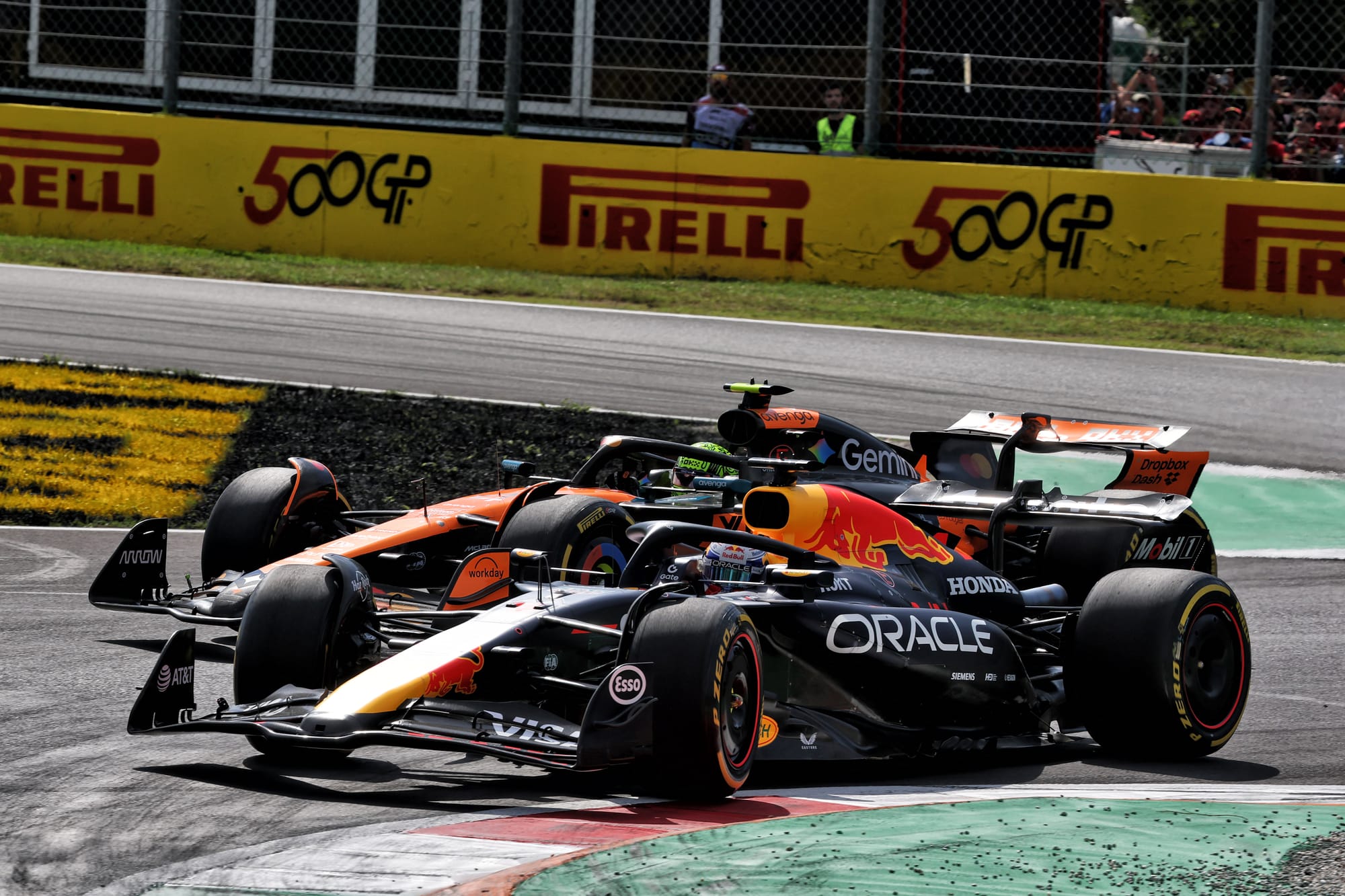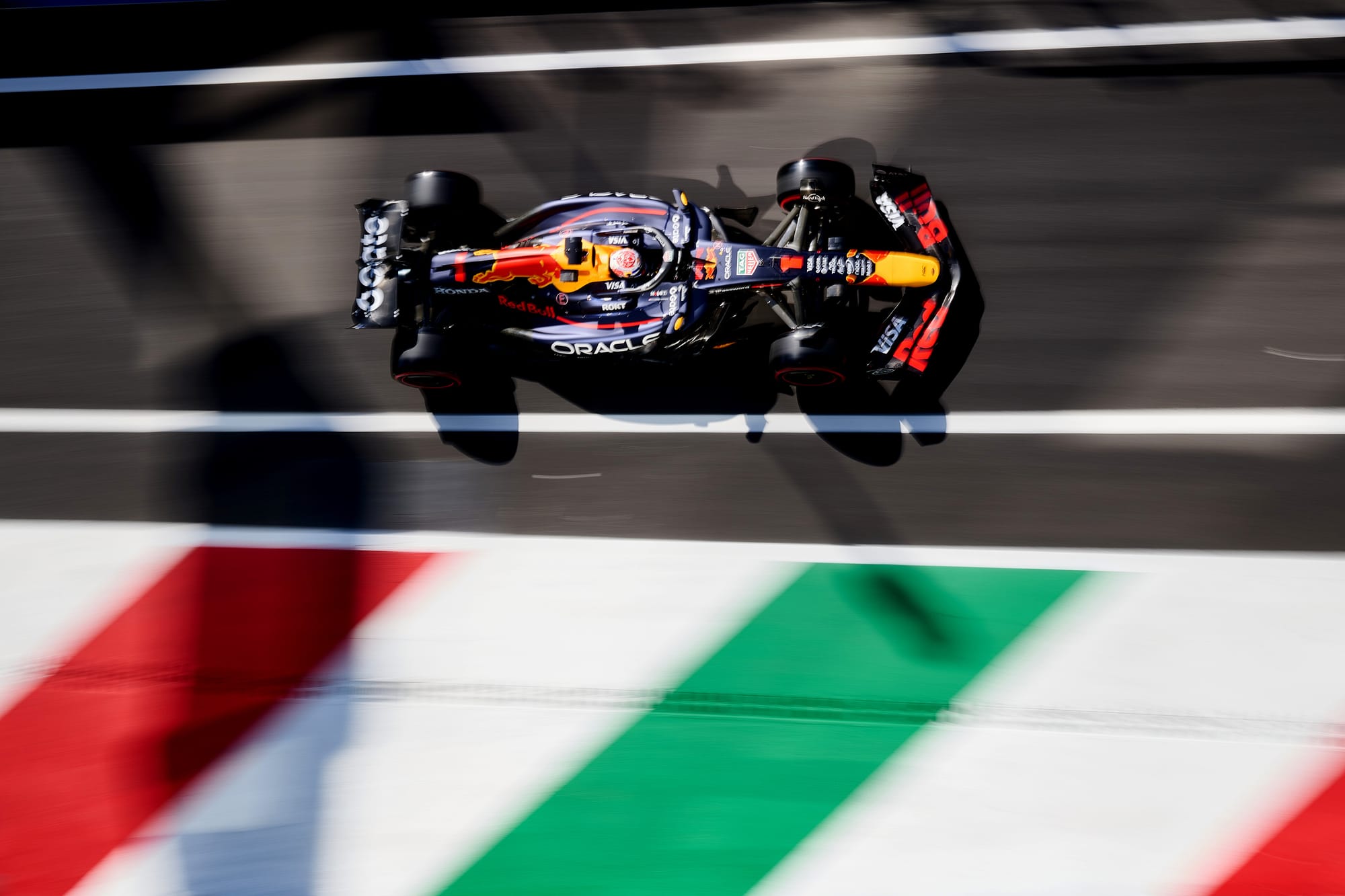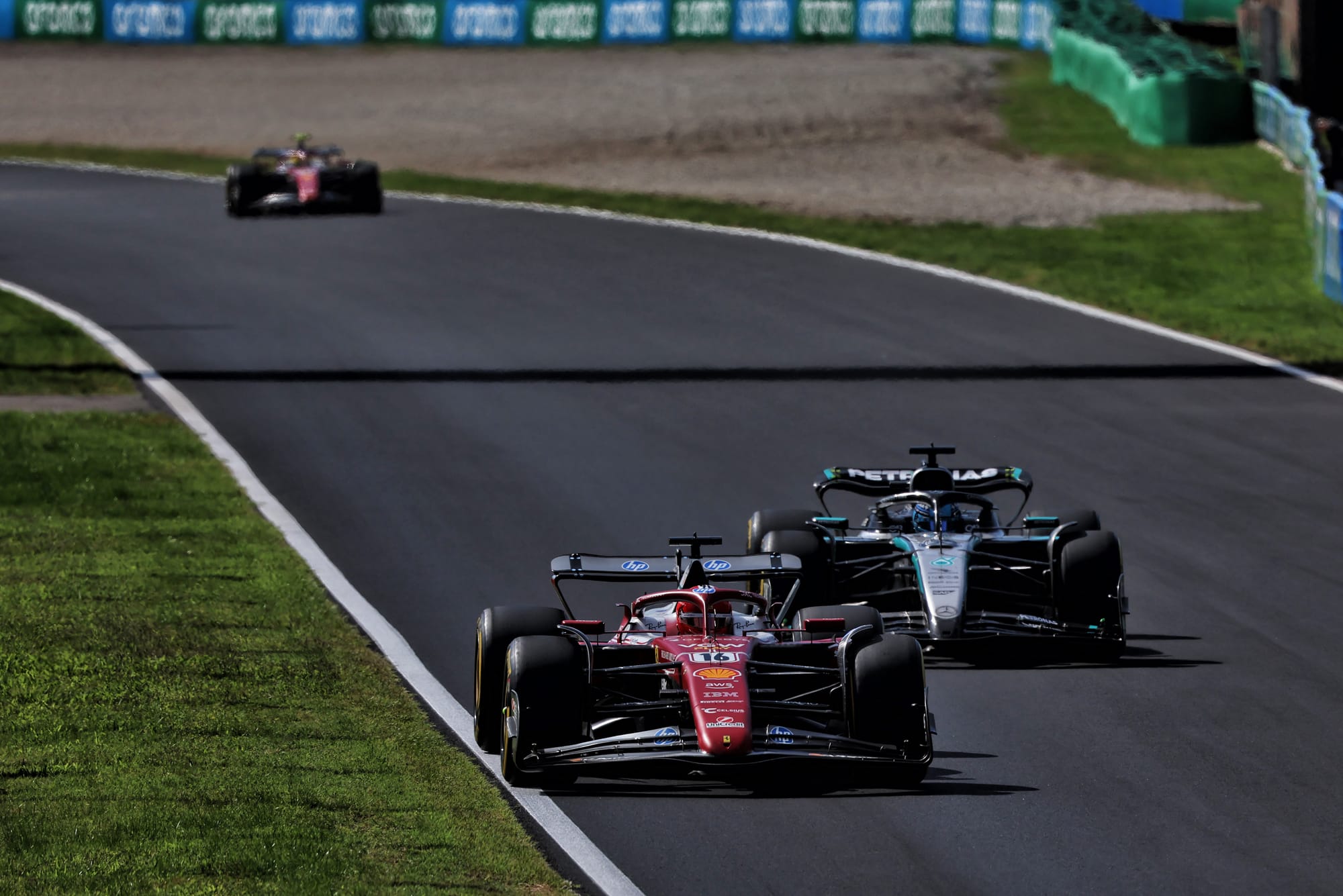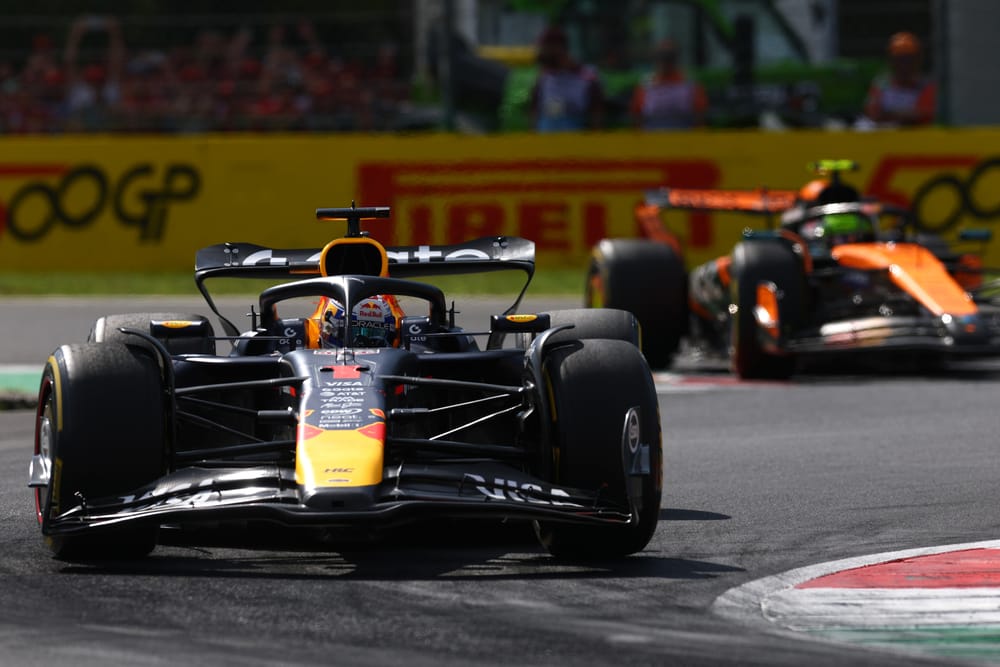Well, which was the bigger story? The fact that Max Verstappen and Red Bull were genuinely faster than McLaren over a full Formula 1 race distance at the Italian Grand Prix? Or that McLaren asked Oscar Piastri to surrender second place to title rival Lando Norris after the latter lost the position to a four-second delay when pitting a lap after Piastri?
Piastri acquiesced - just as he had in qualifying, when he'd agreed to help Norris out of the mess he'd got into in Q2 and gave him a tow to ensure he got through to Q3 - but he didn't agree with it. He said his piece, pulled aside, and then raced the remaining few laps. But this was all happening almost 20s behind the imperious Verstappen.
The championship leader can maybe afford such generosity given his significant 31-point lead over Norris. But what if the time comes when he no longer has that margin?
Anyway, why was Red Bull genuinely faster than McLaren here?

We explained on Saturday about how, at Monza, McLaren carries nowhere near its aero-efficiency advantage over the others that it enjoys at higher-downforce levels. The other usual McLaren advantage of tyre durability wasn't a driving factor in what was needed here either; the high-grip surface meant thermal degradation wasn't an issue. So there was another McLaren advantage negated.
But in that little window of tyre performance and downforce levels, Red Bull found a magic little sweet spot. That's where the secret lay.
If we're really looking for the root of it all, we need to go back to last year and how disastrously uncompetitive the Red Bull was here. A big part - but not all - of that was because it had not created a purpose-built optimised Monza wing. The trimmed version of its standard low-downforce wing was nowhere near efficient enough to get the car out of a balance hole.
Red Bull did not repeat that this year; the RB21 is a more benign car than its predecessor anyway, but also the team began creating a proper Monza wing before this season had even begun.

Although Red Bull trimmed that rear wing out to below McLaren levels (but still above Ferrari), it carried more front relative to the rear than the McLaren. The extra-trimmed version was tried at the end of FP3. It made the car a bit of a handful. For qualifying, Red Bull applied a little more area to the front wing. It switched on the magic. In ways perhaps Red Bull hadn't even envisaged. For it did more than just give the RB21 a good balance at a track where that's difficult to achieve with a ground effect car.
That was the pivot point Verstappen had been playing with throughout Friday and into Saturday. With enough front wing (and a small enough rear wing), he was able to make the Red Bull super-responsive to the steering into the slow turns. With this generation of car, teams have evolved towards getting ever-more rotation from the rear, minimising the steering input. Red Bull - taking advantage of the high surface grip of the track and the low degradation - found that actually the extra front wing made the car respond more aggressively to steering to get the rotation.
Post-qualifying, Alex Albon came away from watching the onboard of Verstappen wrenching the steering right and left through the chicane in disbelief as the front of the car just followed its nose without upsetting the rear. He looked plain puzzled. That was the magic little window that this track on this weekend had opened for Red Bull, as McLaren just did its usual balancing around what it had, accepting this was its least-strong track without stretching for a rethink.
What it made for was a Red Bull that was not only fast enough for Verstappen to take that pole, but one which was faster in the race too. Much to everyone's surprise - Red Bull's and McLaren's. "I'm limited by my front-left," said Norris as Verstappen pulled away from him early in the race once they'd settled their great opening-moments dice.
The McLaren's fronts were mildly graining. Nothing to force it to pit early, but "just slow", as Norris said. With the rear helping the turn-in, the fronts were just floating across the surface in contrast to those on the Red Bull, which were gripping hard at the aggressive and sudden steering angles Verstappen was able to feed in. No graining for him.
But...there's the deg a tyre suffers from its surface being dragged across the track and that which results from feeding greater loads into the bulk of the tyre. The first is about graining, the latter can result in blistering.
Which is exactly what we saw in that first stint; Verstappen, with no graining, was pulling away, at least a couple of tenths faster than Norris, whose pace was restricted by the graining. That greater front loading on the Red Bull wing was protecting the surface, but putting more heat into the bulk - which after about 30 laps mean the front left was blistering. By which time it didn't matter; he had six seconds over Norris and so could comfortably stop a lap or two later and still be in front.
"Graining is about the mechanical resistance of the compound," explains Pirelli's Mario Isola. "It tears. You break it as you steer it. The blistering is about excessive temperature in the bulk of the compounds. The temperature inside the bulk is not homogenous and circumferentially at the outer edge is normally where it's highest. That means you start generating these bubbles inside the compound.
"More aero load on the tyre helps with graining but it can increase blistering. If you have more load you slide less and by sliding less, you put less friction energy on the surface, protecting the graining but putting more energy into the bulk of the tyre and raising the temperature."
That was the Red Bull and the extra front wing Verstappen and his engineering team had so smartly found.
So that's why the Red Bull was faster. But why did McLaren pit Oscar Piastri in third place before Norris, who'd run in front of him throughout?
Norris suffered the front-left delay, which allowed Piastri to undercut ahead of him. Which created the controversy about requesting Piastri to put right the error on Norris's car. That was all about McLaren's internal team play policies. So - in a more convoluted way - was the timing and sequencing of the stops which triggered the dilemma.
Tyre deg was low on the nicely-run-in surface, which was newly laid a year ago. So there was only a very small undercut effect and the race was a nailed-on one-stop. The mediums and the hards were quite evenly matched and Verstappen came in to exchange his blistered mediums after 37 laps. He'd been keeping the gap ahead of Norris at 5.5-6s even after the blistering began. Piastri had been running a similar distance behind Norris but was beginning to catch, having not given his tyres as tough a time earlier on.
McLaren at this point wanted to extend the stints of both drivers, for two reasons: A) if there was a safety car it would put them 1-2 or B) even without a safety car, if they could run on the original mediums long enough, they could switch to the softs for the last stint. Which may have allowed them to pressure the hard-shod Verstappen.
The complication of that was twofold: Firstly, Verstappen on his new tyres soon began to pull enough time on them that even if there'd been a safety car he'd have reclaimed the lead. Secondly, if McLaren pitted Norris first as the lead car, and there was a safety car just after he'd stopped but before Piastri had, they would have inverted the merited order; Piastri would have emerged ahead of Norris through being left out long enough to catch the safety car. So they worked backwards from the ideal time to stop Norris - calculated as lap 46 - and stopped Piastri the lap before. Norris agreed. Piastri was still too far back to undercut Norris - and this still covered off the very distant undercut threat from Leclerc.
Except of course Piastri's stop took 1.9s and Norris 5.9s. Deja vu for Piastri - rejoining now as the lead McLaren - as he was requested by his engineer to help out the other guy, just as in qualifying. "We said a slow pitstop was part of racing," he replied to the request, presumably in reference to an internal discussion. "I don't really get what changed here but if you really want me to do it then I'll do it."
That was it.

The low-drag Ferraris weren't quite in the same race as the McLarens. Charles Leclerc was a solid fourth, Lewis Hamilton made a decent recovery from his penalised grid start to take sixth. The high-drag Mercedes of George Russell split them.
Albon won Williams the 'best of the rest' award after a gritty drive to seventh ahead of Kimi Antonelli's Mercedes on the road (but he was penalised five seconds to ninth behind Gabriel Bortoleto's Sauber), with Isack Hadjar taking a point from his pitlane start in the Racing Bulls.
The winner fresh out of the car had a pin-sharp analysis of why his winning margin was as much as 19 seconds.
"The car was nice for once," said Verstappen. "It was doing a little bit more what I liked.
"It just seems like this weekend has been another step forward with the behaviour of the car and that also then shows in the race, I think. So that was a big positive for us.
"Then, of course, we did a bit more of a normal strategy, medium-to-hard. McLaren stayed out to try and gamble for the safety car, and I think that's why the gap is a little bit bigger than it should have been. But still for us, an incredible weekend."




